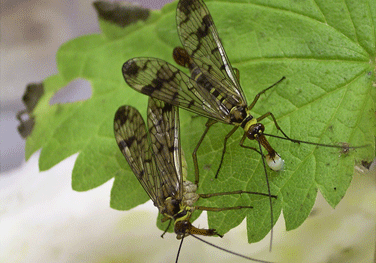Radioactive weddings
Joe wrote:

Nuptial gifts in insect (and arachnid) species are sexually selectable visual traits - like eye color, wing size, body mass, wing color, wing flapping, etc. More of this trait (than less of it) conveys signals of male quality to females. The males of many insect (and arachnid) species exploit the visual receptors of the females by displaying an item such as: a dead bug, a salivary secretion, a spermatophore, a leaf, etc. - before, during or after copulation. The gift is offered by males to induce high-quality females into mating. The gifts, also, provide valuable mating-incentives to females, as nutritional resources are scarce - severely lacking in many habitats.
I cite reams of evidence from experiments. Khuno distorts orthodox bio-terms into counter-real clap-trap, he falsely attributes these distortions to me then he attacks his bio-term distortions - as though he were attacking evo-bio.
- Khuno wrote:
-
Nuptial
1. Of or relating to marriage or the wedding ceremony.
2. Of, relating to, or occurring during the mating season: the nuptial plumage of male birds.
So obviously you mean the second
Gift
Something that is bestowed voluntarily and without compensation.
So, according to you, who understands gift literally, the scorpionfly is VOLUNTARILY bestowing something without the EXPECTATION of COMPENSATION during mating season. You see what a literal understanding does to your preferred interpretation of the biologist's term?
Khuno might have selected a dictionary meaning - which literally conforms-to evolutionary biology.
- nuptial
- "Of, relating to, or occurring during the mating season: the nuptial plumage of male birds."
- gift
- "something given to show friendship, affection, support, desire, interest etc."
- nuptial gift
- "During the mating season, something given [by an insect male] to show interest [in breeding with a high quality female of his species]"
Male nuptial gifts: phenotypic consequences and evolutionary implications - by Carol L Boggs
Boggs:
"Much of the work on insect nuptial gifts has been done to explore the effects of relative reproductive investment by each sex on sex roles and the operation of sexual selection. This work was stimulated by a series of authors, beginning with Darwin."
"Male nuptial gifts are widespread across insect orders, including those with a range of feeding habitats and in a diversity of environments."
"Nuptial gift giving is an excellent vehicle to test sexual selection theory. Male nuptial gifts have primarily served as a case example to study theories of sexual selection."
"We have initial information on absorption rates of internal spermatophores and on the usage rates in oogenesis of materials from both internal and external donations. Most of these data come from radiolabel experiments. Males are labeled with radioactive amino acids and mated with females; then eggs and/or females are tested for radioactivity at intervals after mating."
If nuptial gifts are not literal features of reality, then how did biologists "radiolabel" their production, physically isolate them from non-human male organisms then experimentally discern their reproductive effects on females and eggs? A necessary pre-condition for an object to emit streams of detectable, radioactive particles is that the object (the gift) literally exist in nature!
Perform this word-stunt now: Point to the ceiling and bellow: "This ceiling does not literally exist!". You've committed a referential contradiction. Next, look at what a biologist is holding between a pair of forceps. Point to this object which has been removed from a male of a gift-giving species and scream: "That nuptial gift does not literally exist!". Now, point to a gift-giving insect and assert: "That organism of a gift-giving species does not literally exist!". My regrets to you, you - too - may be a Khuno. (According to him, the latter 2 existents are non-cognitive chunks of literal nothingness - because they are denoted by the anathemized, sexual selection terms: nuptial gifts and gift giving.)
Boggs:
"The antiquity of spermatophores within Insecta means that the potential for male nutrient donations via the spermatophore or similar accessory gland secretions is probably at least as old as the class."
If these gifts were figments of someone's imagination, then how did they originate in the freakin' Triassic era, functioning in the mating systems of a bewildering variety of insect (and arachnid) species for ~500M years?
If sexual selection (non-random, differential reproductive outcomes, primed by female preferences for male ornaments) did not literally operate in the mating-systems of the non-human, archaic lineage - which gave rise to Homo Sapiens, then - according to evolutionary biology, Khuno would not be around to formulate and reel-off his howler that (to anyone) insects are "VOLUNTARILY bestowing something without the EXPECTATION of COMPENSATION during mating season".